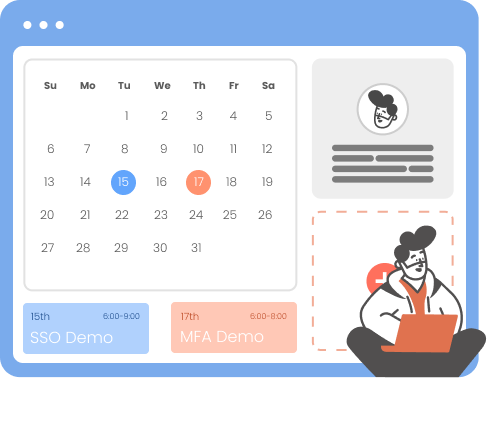Need Help? We are right here!
Need Help? We are right here!
Thanks for your Enquiry. Our team will soon reach out to you.
If you don't hear from us within 24 hours, please feel free to send a follow-up email to uemsupport@xecurify.com
Search Results:
×Want to block external file sharing, stop unauthorized downloads, and enforce airtight policies in Google Drive? Learn how to lock down your data and meet compliance with powerful CASB strategies.
Google Drive's built-in sharing controls just aren't enough. If your organization handles sensitive data like financial records, client files, and healthcare info, you can't afford to rely on "View" or "Edit" access settings alone.
A Google Workspace CASB solution can help you go beyond these security limitations by offering real-time visibility and granular control over file-sharing behavior. Let's find out how a CASB solution can block unauthorized downloads, prevent sharing with unapproved domains, and detect risky actions like transferring PDFs to USB drives or external accounts.
Google Drive provides basic sharing permissions: Viewer, Commenter, and Editor, with options to restrict downloading, printing, and copying. While useful for collaboration, these Google Drive sharing controls have limitations when it comes to data loss prevention, compliance enforcement, and enterprise-level security.
miniOrange CASB for Google Workspace offers visibility, control, and threat protection beyond what's natively possible by Google Drive. It closes critical security loopholes and aligns with enterprise compliance needs for data residency, access governance, and zero-trust enforcement.
Using Granular Access Control Policies, miniOrange CASB allows admins to block downloads of sensitive files from Google Drive, especially on unmanaged or personal devices. By evaluating context such as device type, IP, and location, CASB stops data from being downloaded to local drives, USBs, or unauthorized desktops, making it ideal for hybrid and remote workforces.
With Google Drive DLP Policy, CASB can restrict users from copying file content to the clipboard, printing, or taking screenshots—even if the file is viewable. These rules apply dynamically and help protect against subtle insider threats and data exfiltration attempts in managed environments.
Through our Prevent External File Sharing in Google Drive solution, organizations can block sharing with personal Gmail accounts or unregistered devices. Policies ensure that files are only shareable within approved domains or to verified user endpoints, reducing shadow IT and ensuring strict boundary control.
The Real-Time File Monitoring feature provides full visibility into Google Drive activity, file edits, downloads, access attempts, and shares. Admins receive alerts the moment anomalies occur, with full session details for auditing and fast response.
If a user violates policy—like sharing sensitive content externally—miniOrange CASB can Auto-Revoke Google Drive File Access instantly. This dynamic enforcement maintains a zero-trust security posture and is vital for meeting GDPR, HIPAA, or internal governance policies.
An employee tries to download or share a sensitive PDF from Google Drive to their personal Gmail or a USB device, a common data exfiltration risk.
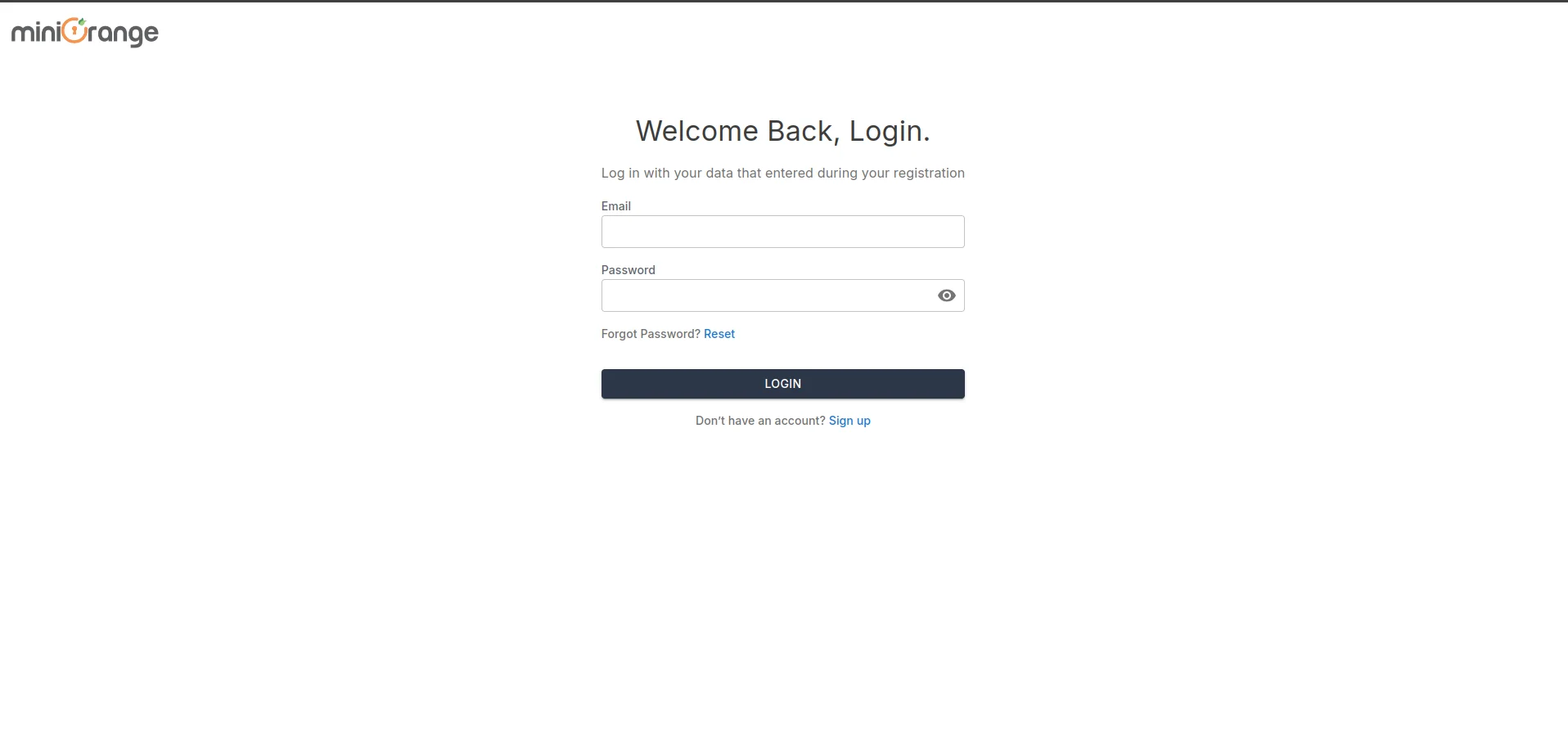
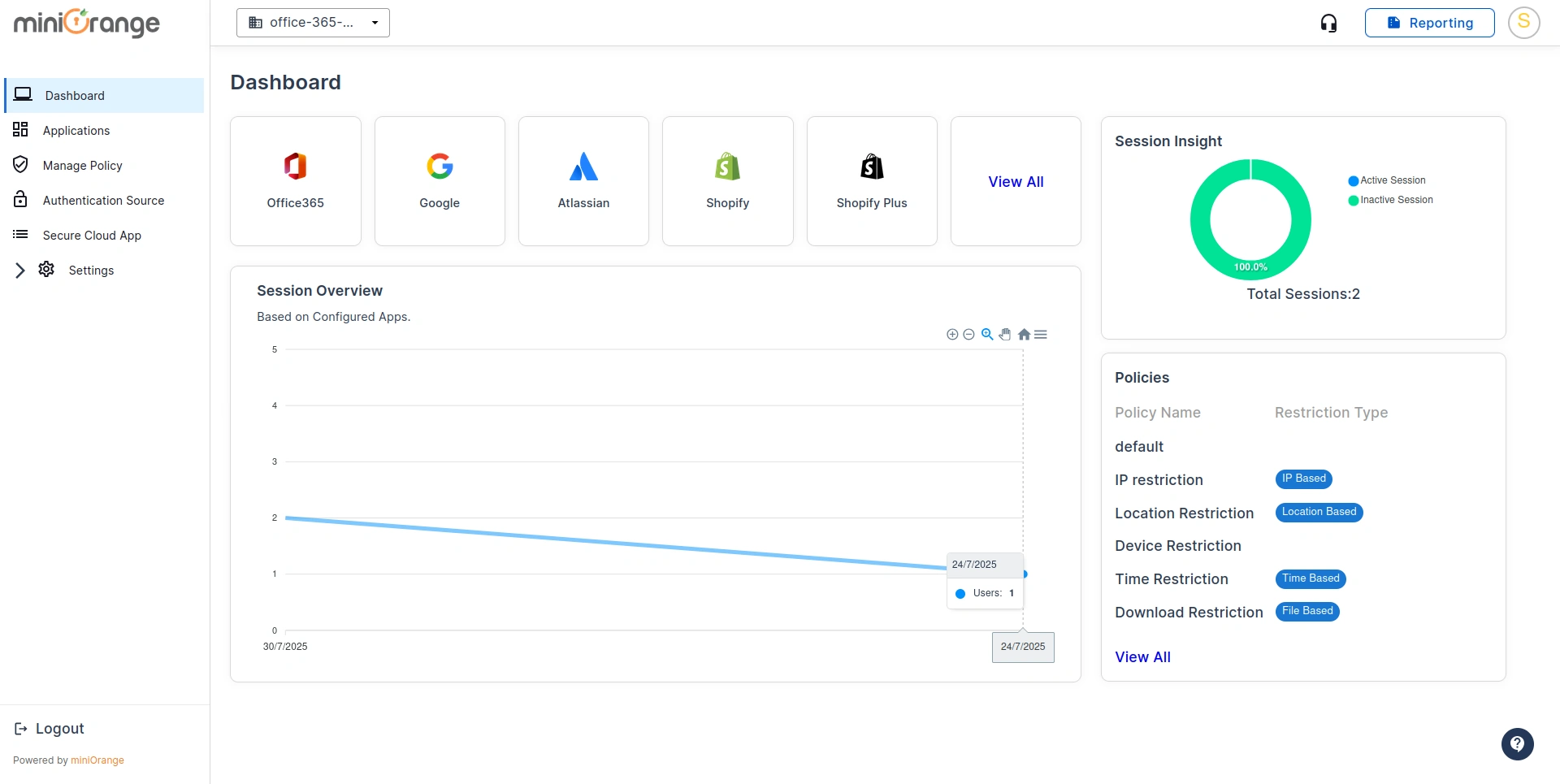
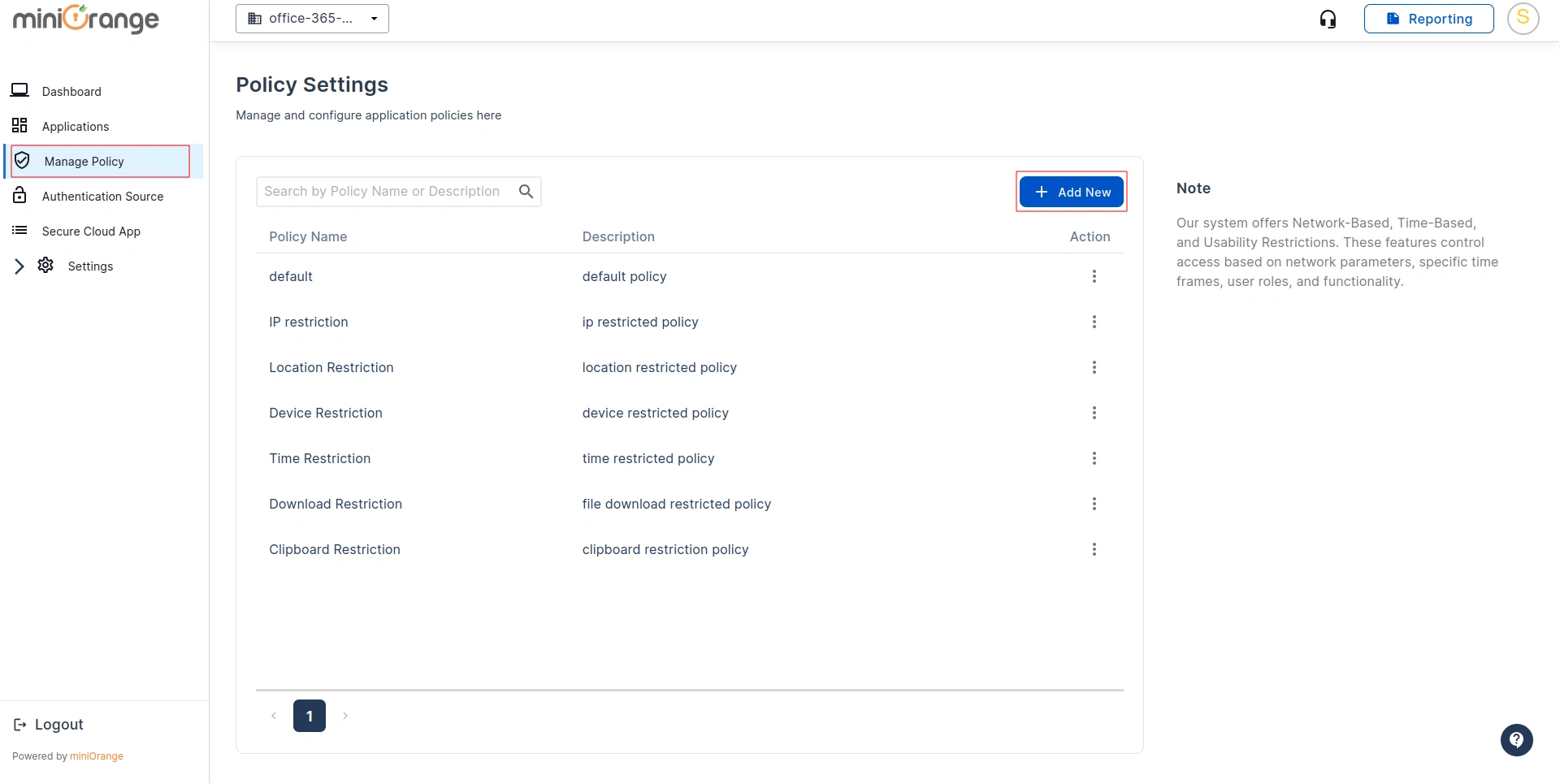
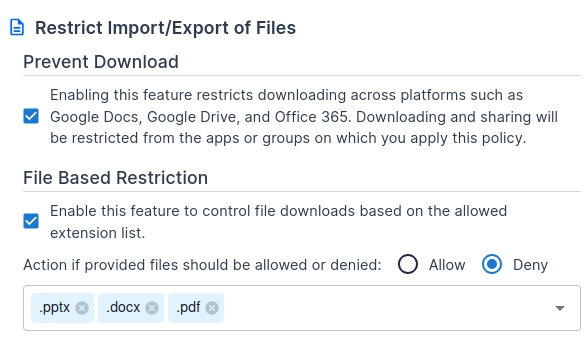

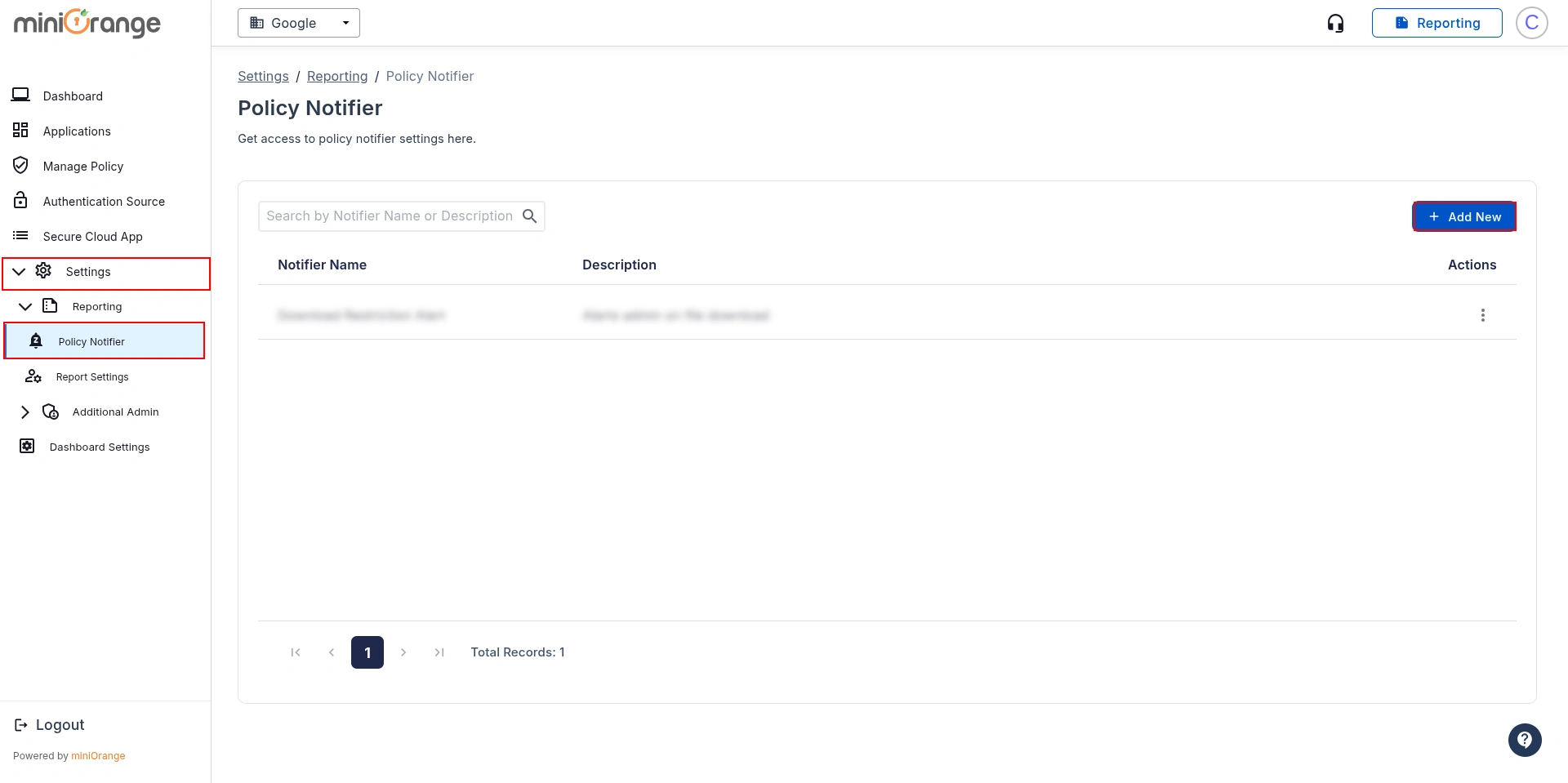
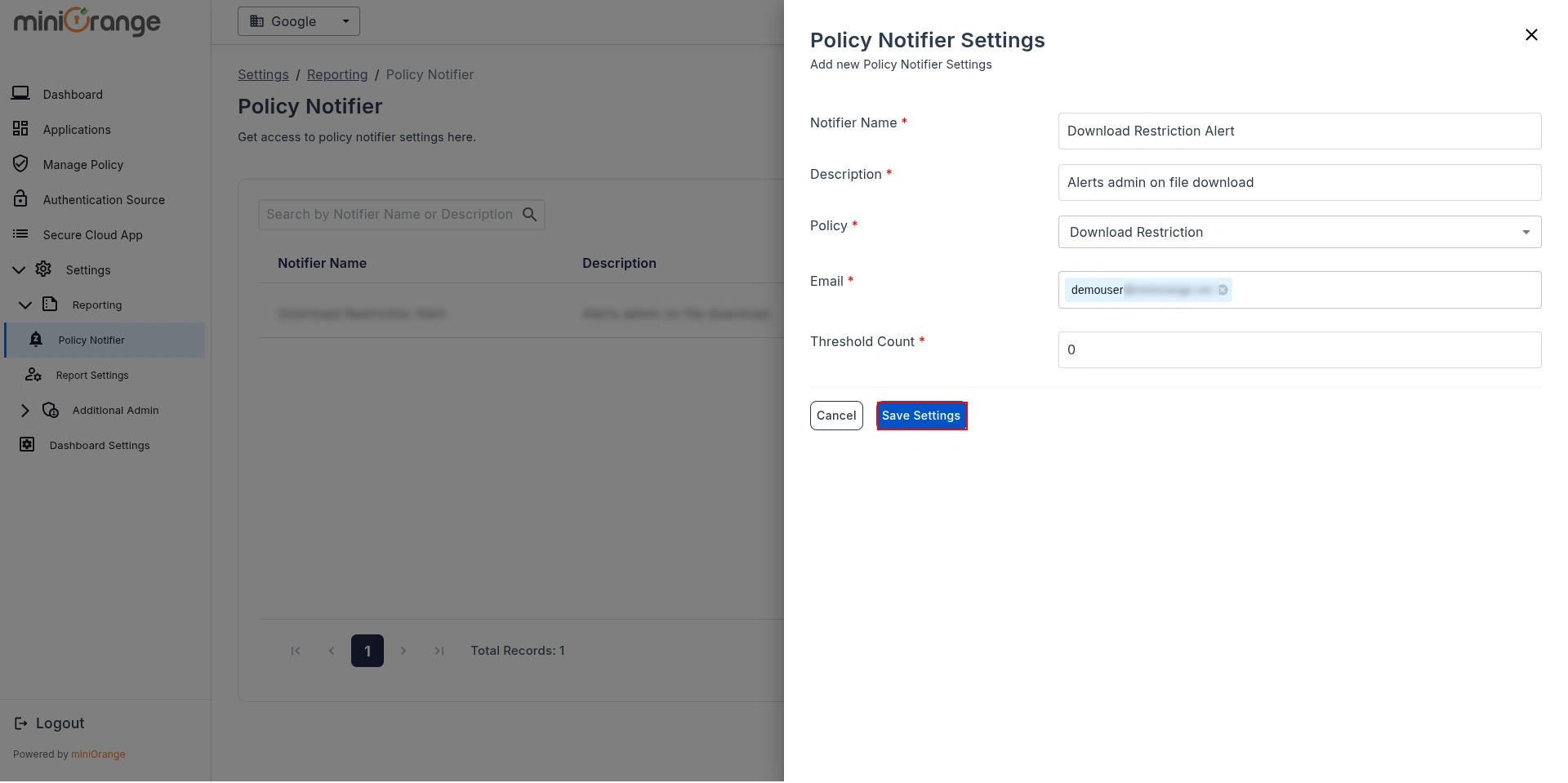

To protect sensitive business data and prevent unauthorized access, organizations must follow these Google Drive sharing best practices. While Google offers native controls, many users overlook essential configurations that can leave confidential files vulnerable. Below are key strategies to ensure secure file sharing in Google Drive.
Avoid using default or public sharing settings. Instead, always set document access to "Restricted" when dealing with internal reports, financial data, or intellectual property. This ensures that only explicitly added users can access the file and helps prevent users from downloading Google Drive files without approval.
One of the most common missteps is enabling the "Anyone with the link" option, which allows the file to be shared without oversight. Instead, add specific email addresses for trusted collaborators and role- or group-based access using CASB. This method enhances control over file sharing in Google Drive and ensures traceability of who accessed what and when.
Turn on email notifications to alert admins or file owners whenever a document is shared externally. These alerts help identify unintentional or risky sharing behaviors in real time and support preventing Google Drive downloads to personal devices or external domains.
Perform regular reviews of sharing permissions and access logs using the Google Admin Console or third-party tools like miniOrange CASB. These audits help uncover forgotten or outdated sharing links, allowing you to revoke access and restrict file downloads in Google Drive when necessary.
For businesses storing sensitive data in Google Drive, meeting regulatory requirements is non-negotiable. Ensuring Google Drive compliance with global security standards like GDPR, HIPAA, ISO 27001, and SOC 2 is critical to avoid penalties and protect data integrity. With the right tools, such as miniOrange CASB for Google Drive, organizations can gain audit-ready visibility, automate reporting, and maintain continuous compliance across all shared files.
To stay GDPR compliant in Google Drive, organizations must ensure personal data is only accessible to authorized users, especially when shared externally. miniOrange CASB helps enforce access controls, identify risky file shares, and generate GDPR-aligned audit reports, ensuring transparency and accountability.
For healthcare providers and related organizations, HIPAA compliance in Google Drive demands strict controls over electronic Protected Health Information (ePHI). miniOrange CASB allows you to monitor file access, block unauthorized sharing, and maintain HIPAA audit trails with real-time alerts for policy violations.
Achieving ISO 27001 compliance with Google Drive involves robust information security policies and evidence of continuous monitoring. With miniOrange, you can automate audit logs, detect access anomalies, and demonstrate ongoing risk management, helping meet ISO's data protection standards.
For SaaS companies, SOC 2 compliance requires controls around security, availability, and confidentiality. miniOrange CASB simplifies SOC 2 reporting in Google Drive by centralizing event logs, tracking external collaboration, and alerting on unauthorized access — ensuring your cloud data practices meet stringent audit criteria.
Preventing unauthorized file sharing in Google Drive is crucial for maintaining data privacy, protecting intellectual property, and ensuring regulatory compliance. While Google Workspace offers native sharing controls, they are often not sufficient to stop users from accidentally or intentionally sharing files externally.
With advanced security tools like miniOrange CASB, organizations can implement granular controls to restrict external access, block downloads and copies, and enforce context-aware data loss prevention (DLP) policies. You can also receive real-time alerts, conduct detailed audit reporting, and apply automated policies to protect files shared via Google Drive.
Whether you're aiming for GDPR, HIPAA, ISO 27001, or SOC 2 compliance, these preventive measures help ensure your business data stays secure, even when collaboration is happening across remote or hybrid work environments.
